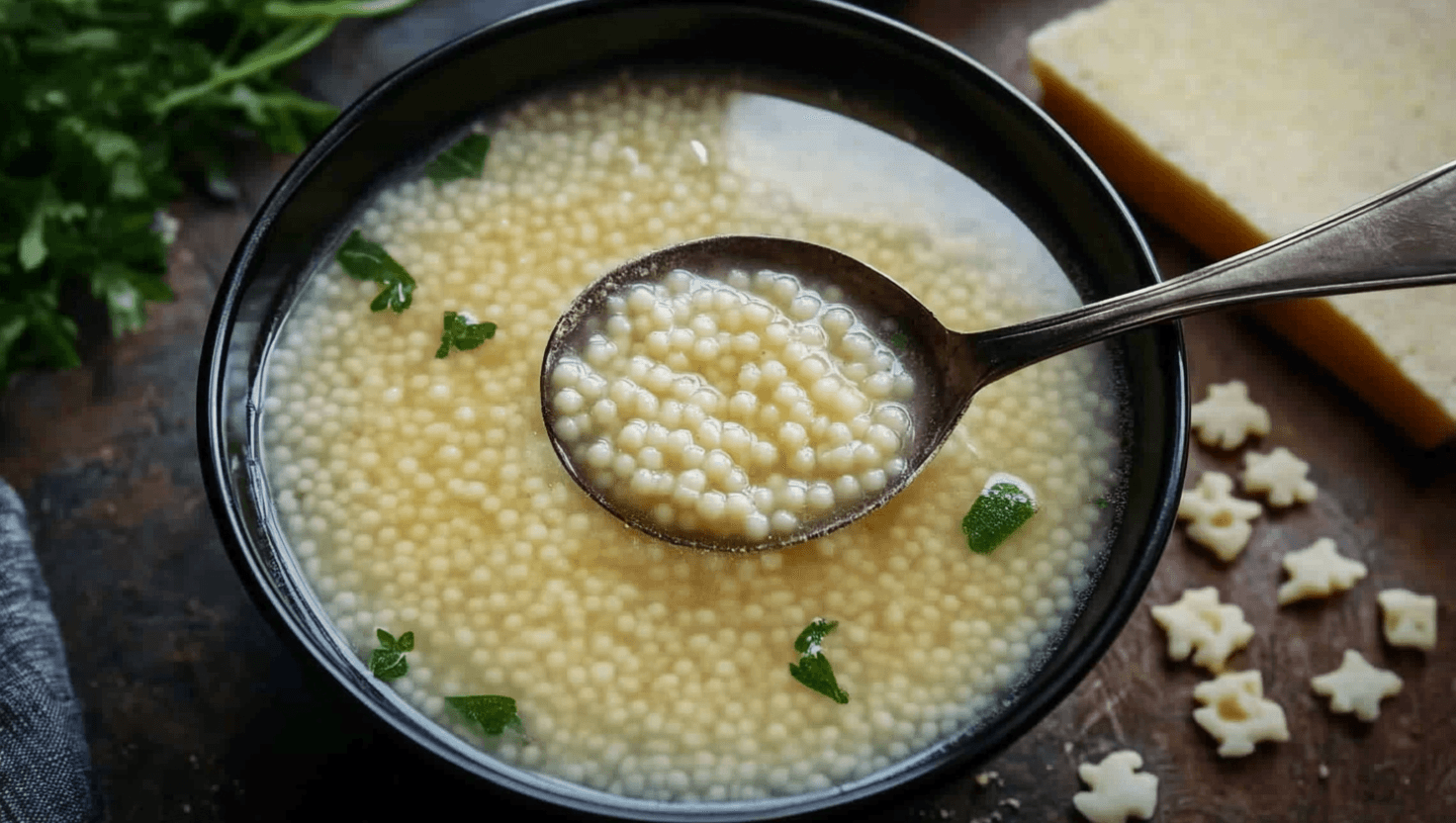Pastina, the tiny star-shaped pasta adored by countless households, has recently become unavailable, leaving fans disappointed and scrambling for alternatives. Known for its comforting role in soups and other traditional dishes, pastina’s sudden absence has stirred concern. This beloved staple, particularly popular in Italian cuisine, evokes nostalgia and serves as a versatile ingredient in countless recipes. But what caused this sudden disappearance? Here, we dive deep into the reasons behind this shortage and its impact on the culinary world.
Key Takeaways
| Aspect | Details |
|---|---|
| Pastina’s Popularity | Loved for its versatility and nostalgic value, especially in Italian and family cuisine. |
| Reason for Discontinuation | Challenges in supply chains and manufacturer decisions are major contributing factors. |
| Alternatives | Other brands and substitutes can fill the void left by pastina’s unavailability. |
Understanding Pastina’s Popularity
The Cultural Significance of Pastina in Italian Cuisine
Pastina has long been a cornerstone of Italian comfort food, cherished for its role in nourishing meals. It’s often used in traditional recipes such as broth-based soups, where its tiny size and delicate texture blend seamlessly with rich flavors. Families in Italy and beyond often associate pastina with warm memories, childhood comfort, and home-cooked meals. Moreover, its unique shape makes it appealing to children and a practical choice for quick meals.
In Italy, pastina represents more than just a type of pasta—it embodies tradition and emotional connections. Italian grandmothers, or “nonnas,” often incorporate it into dishes that are passed down through generations. Interestingly, many nonnas swear by its healing properties when included in chicken broth, making it a go-to meal during cold seasons.
Pastina as a Staple in Households
In addition to its cultural importance, pastina has earned its place as a pantry essential in many households. Its adaptability makes it perfect for diverse recipes, from creamy risottos to hearty casseroles. Not only is it economical, but it’s also versatile, providing comfort and sustenance. For busy parents, pastina is a reliable ingredient that pleases picky eaters and offers quick meal solutions.
Notably, its affordability and simplicity have made it a staple for families on a budget. For instance, one could create a hearty meal using just pastina, chicken broth, and a touch of Parmesan cheese. This has made the discontinuation particularly distressing for many, sparking public outcry.
Quick Tip: If you’re missing pastina, consider other small pasta shapes like acini di pepe or orzo as suitable substitutes.
Why Is Pastina No Longer Available?

Supply Chain Challenges Leading to Pastina’s Discontinuation
The global supply chain has faced unprecedented disruptions in recent years, significantly impacting the production of specialty items like pastina. Manufacturers like Ronzoni cited logistical difficulties, including rising costs and sourcing issues, as reasons for ceasing production. These challenges extend to the procurement of specialized equipment necessary for crafting the distinctive tiny pasta shapes.
Moreover, pastina production requires unique molds and processes, which are less commonly used in pasta manufacturing. This niche demand makes it particularly vulnerable to disruptions. According to Ronzoni’s explanation for pastina discontinuation, the company struggled to find suppliers who could maintain the quality and affordability consumers expect.
Manufacturer Decisions Impacting Pastina Availability
Apart from supply chain difficulties, strategic decisions by major pasta companies have also played a role. Ronzoni, one of the most recognizable brands for pastina, announced in early 2023 that they could no longer produce the pasta due to supplier constraints. This decision shocked loyal consumers, as Ronzoni’s pastina had been a household name for decades.
Manufacturers must also balance profitability and consumer demand. While pastina enjoys a loyal following, it constitutes a small fraction of overall pasta sales. Consequently, companies may prioritize larger-scale, more profitable products, leaving niche items like pastina behind. This has left consumers searching for alternatives or even attempting to make pastina at home.
The Role of Suppliers in Pastina Production
Dependence on Specialized Suppliers for Pastina
The production of pastina hinges on a network of specialized suppliers equipped to produce its unique shape. Unlike spaghetti or penne, pastina requires molds and production lines specifically designed for its diminutive size. These suppliers are not only rare but also susceptible to economic fluctuations, making them vulnerable to shutdowns or capacity limitations.
For instance, if a key supplier decides to halt production or exit the market, it creates a ripple effect. Additionally, finding replacement suppliers capable of maintaining the same quality and volume can be challenging for manufacturers.
Insight: The reliance on specialized suppliers highlights why certain pasta shapes are more prone to shortages compared to others.
Consequences of Supplier Withdrawal
When suppliers withdraw, manufacturers face the difficult choice of either discontinuing products or overhauling their production processes—both costly endeavors. For a niche product like pastina, the latter option often proves impractical. Moreover, the sudden withdrawal of suppliers can lead to gaps in availability, leaving consumers scrambling for alternatives.
Interestingly, the withdrawal of pastina suppliers coincides with broader supply chain issues affecting the food industry. Factors such as rising raw material costs, shipping delays, and labor shortages have compounded these challenges. This underscores the complex interplay of global markets and localized production, ultimately leading to shortages.
Consumer Reactions to Pastina’s Unavailability
Public Outcry and Petitions
The sudden disappearance of pastina from store shelves has sparked widespread disappointment among consumers. For many, pastina is not just another pasta—it’s a comforting staple tied to cherished family traditions. The public’s reaction has been vocal, with fans taking to social media to share their frustrations and plead for its return. Notably, petitions urging manufacturers to reconsider their decisions have gained significant traction, reflecting the strong emotional connection people have with this beloved product.
Moreover, hashtags like #BringBackPastina have trended on platforms such as Twitter, showcasing the collective disappointment and nostalgia. Some consumers have even shared creative ways to replicate pastina using alternative pasta shapes. According to consumer responses to pastina shortage, many have expressed their willingness to pay a premium just to have this staple back in their kitchens.
Nostalgia and Cultural Impact
The absence of pastina goes beyond inconvenience; it touches on the cultural fabric of many communities. Families have long relied on pastina to pass down culinary traditions, especially within Italian-American households. Its simple preparation and versatility have made it a cherished ingredient for generations. For instance, it’s often the first solid food fed to children and a comforting meal for the sick.
Not only does this unavailability disrupt everyday cooking, but it also creates a void in cultural rituals tied to food. Additionally, the loss highlights how deeply food can be interwoven with identity and heritage. The outpouring of emotions surrounding pastina underscores its symbolic significance, far beyond its culinary use.
“Pastina isn’t just pasta; it’s a bowl of memories and warmth.”
Alternative Brands

Other Pasta Brands Filling the Gap
While Ronzoni may have ceased production, other brands have stepped up to fill the void. Companies like Barilla and De Cecco continue to produce small pasta shapes that closely resemble pastina, offering some solace to disappointed consumers. Interestingly, these alternatives have seen a surge in demand, with many stores struggling to keep them in stock.
Some shoppers have turned to specialty stores or online platforms to find pastina or its substitutes. According to alternative brands for pastina, smaller producers and imported brands are gaining popularity among consumers seeking to replicate traditional recipes.
Availability of Substitute Pasta Shapes
For those unable to find pastina, substitutes like acini di pepe, orzo, and stelline can provide similar textures and flavors. Moreover, these alternatives are widely available in most grocery stores, making them a convenient option for those looking to recreate their favorite recipes. Each of these shapes has its unique characteristics but retains the essence of small, delicate pasta.
Here’s a helpful comparison:
| Pasta Shape | Description | Best Used For |
|---|---|---|
| Acini di Pepe | Tiny round pasta pearls | Soups, salads, and side dishes |
| Orzo | Rice-shaped pasta | Soups, casseroles, and pilafs |
| Stelline | Star-shaped, like pastina | Soups and light broths |
Additionally, experimenting with these substitutes can lead to discovering new favorite dishes. While they may not fully replace pastina, they serve as practical and accessible options for those in search of alternatives.
The Future of Pastina in the Market
Potential for Pastina’s Return
Despite the challenges, the possibility of pastina making a comeback is not entirely off the table. Manufacturers are often driven by consumer demand, and the overwhelming public response to pastina’s discontinuation might encourage companies to reevaluate their decisions. Moreover, the success of petitions and social media campaigns highlights the strong market demand, signaling an opportunity for manufacturers to capitalize on the product’s emotional appeal.
Historically, consumer movements have successfully brought back discontinued items. For instance, several food brands have reintroduced beloved products after gauging the intensity of public sentiment. If this pattern holds, pastina could potentially return under different branding or from alternative producers.
Fact: A change.org petition to bring back pastina has garnered thousands of signatures, showing the product’s enduring popularity.
Innovations in Pasta Manufacturing
Advancements in technology could also play a pivotal role in reviving pastina production. Modern manufacturing techniques have the potential to address the challenges of specialized equipment and supply chain issues. Additionally, 3D printing technology and automated systems may reduce production costs, making it feasible for companies to offer niche products like it at scale.
In recent years, sustainability and efficiency have become priorities for food manufacturers. These trends might influence how pastina is produced in the future, focusing on minimizing waste and optimizing processes. Interestingly, small artisanal producers may lead the way in bringing it back , offering limited quantities that cater to a dedicated audience.
FAQs About Pastina’s Unavailability
Why Did Ronzoni Discontinue Pastina?
Ronzoni cited challenges with sourcing specialized equipment and maintaining a reliable supply chain as the primary reasons for discontinuing pastina. The company noted that despite efforts to find alternative suppliers, the costs and logistical issues proved insurmountable.
Are There Any Health Concerns Related to Pastina?
No specific health concerns prompted the discontinuation of pastina. It remains a safe and wholesome product, beloved for its simplicity and nutritional value in broths and soups.
Can I Make Pastina at Home?
Yes, it’s possible to make it from scratch using basic pasta dough. Shaping the tiny pasta requires patience, but it can be done with tools like a small cutter or even a piping bag. For a detailed guide, check out this step-by-step guide for making pastina soup at home.
Will it Become Available Again?
While there are no guarantees, the strong public demand and potential innovations in manufacturing suggest a possible return. Monitoring announcements from pasta brands will provide further insights.
What Are the Best Substitutes for Pastina in Recipes?
Substitute options like acini di pepe, orzo, and stelline offer similar textures and can be used in most recipes traditionally featuring pastina. Experimenting with these alternatives can yield satisfying results.
Tip: Cooking times for substitutes may vary, so adjust recipes accordingly.
Final Thoughts
The absence of pastina has left a noticeable void in kitchens around the world, disrupting traditions and altering meal preparations. However, this shift also opens doors to exploring alternative pasta shapes and embracing creativity in cooking. Pastina’s story is a testament to the deep connections people share with food and its cultural significance.
Whether it returns or remains a cherished memory, pastina’s legacy endures as a symbol of comfort and tradition. In the meantime, consumers can rely on substitutes and homemade versions to keep the spirit of pastina alive in their kitchens.

